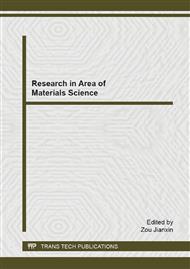p.280
p.288
p.292
p.297
p.302
p.309
p.315
p.319
p.325
Experimental Study on Aging Characteristics of Liquid Silicone Rubber Sheds for Composite Bushing
Abstract:
Based on the large-area aging and cracking phenomena of Liquid Silicone Rubber (LSR) composite bushing sheds occurred in power grid, the research has been performed on LSR composite bushing sheds energizing for many years By using the methods of Scanning Electron Microscopy (SEM), Fourier Transform Infrared Spectroscopy (FTIR), Thermogravimetry (TG) analysis, the authors analyze different parts’ aging properties, microstructures and composition changes of LSR bushing sheds. The experimental results show that the natural environment may be one of the important factors that cause the LSR aging, gradually from the surface to the interior, there are no new groups generated in the process of aging, but the long chain content, the crosslinking degree and the side chain methyl number of LSR decrease obviously, and along with the aging aggravation, the organic composition content in LSR reduces gradually. This research poses great reference significance for better understanding aging mechanism of LSR, scientifically evaluating its lifetime, and guiding scene operational maintenance.
Info:
Periodical:
Pages:
302-308
Citation:
Online since:
April 2015
Authors:
Price:
Сopyright:
© 2015 Trans Tech Publications Ltd. All Rights Reserved
Share:
Citation:


